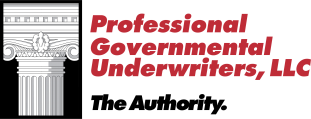Educators Management Liability: Exploring Learning Methods – Part 2
Educators Management Liability: Exploring Learning Methods – Part 1
November 14, 2013Educators Legal Liability: Intervening in Cyberbullying Cases
November 21, 2013Educators Management Liability: Exploring Learning Methods – Part 2
Educators Management Liability: Exploring Learning Methods – Part 2
In today’s classrooms, it’s evident that not all students learn in the same way. It doesn’t make them a bad student, they just may respond to particular learning methods better. In the first part of this blog series, we discussed one type of learning method that many educators prefer to use; problem-based learning. Another learning method that teachers prefer is project-based.
Project-based learning is considered an alternative to paper-based, teacher-led classrooms. The idea behind it is to “learn by doing”, a concept initially promoted by American philosopher John Dewey in the early 1900’s. This learning method is an instructional strategy in which students work cooperatively over time to create a product, presentation, or performance. The two essential components of project-based learning are an engaging and motivating question, and a product that meaningfully addresses that question.
According to the International Society for Technology in Education (ISTE) there are many benefits of project-based learning, including:
- Students can shape the project to fit their own interests and abilities.
- Students collect and analyze information, make discoveries, and report their results.
- Students conduct research using multiple sources of information.
- The project cuts across a number of disciplines.
- The project can extend over a significant period of time.
- The context for the subject matter is larger than the immediate lesson.
- The instruction and facilitation is guided by a broad range of teaching goals.
Project-based learning is similar to problem-based learning in that they both involve realistic problems and situations, both are based on authentic educational goals, and both include formative and summative evaluations. However the main different is that problem-based learning focused on the problem and the process, while project-based learning focuses on the product, or final result.
It’s important to explore learning different learning methods and find out what will work best for your students and schools. At Professional Governmental Underwriters, Inc., we know that all public entities are not created equal. Different needs and circumstances require different answers. Our School Board programs are tailored specifically for public, parochial and nonprofit private school entities including colleges, universities and vocational training schools. For more information, please contact us today toll free at (800) 586-6502.

